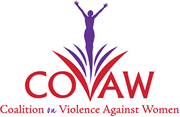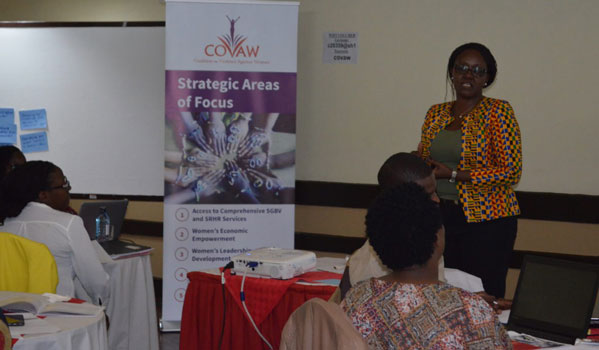The Right to Remain Uncut
“Before my parents, before my family and before my village-I declare my right to remain uncut. To keep my body whole and free from tetanus infection and HIV. Free from harm, violence and pain so that girls like me across the world can remain in school. Be married when I want and be part of a new generation-That is born uncut and free to live unharmed.”
Distinguished guests, colleagues and friends, thank you for giving me this opportunity to speak on a subject close to my heart.That was a chant from pre-teen girls in Senegal as 7000 communities swore to abandon the practice with the kind assistance of London Based Orchid Project-working together to end FGM Is the elimination of FGM possible in this decade?
Female genital Mutilation/cutting is a practice that is so often shrouded in secrecy and yet we are here today breaking the silence and this cycle of violence against women and girls. I stand before you to tell two sides of my story about this harmful practice and the journey toward its elimination in because I believe it is possible in this decade.
Allow me to bring you into the picture concerning the classification.The World Health Organization gives us the following typology: –
FGM Type 1 to 4 WHO. All done without anaesthesia with no medical benefit. The practice has devastating consequences and some immediate complications and long term health consequences. I speak from my experience as a witness, as a Kenyan Obstetrician and Gynaecologist. Over the years, I have been faced with countless women and girls who are living with the lifelong impact of the cut. These are the lucky ones to be alive today as those who died during the process due to excessive bleeding or severe infection are unable to share their stories.
Imagine a lifetime of painful periods, possibility of school drop out in favour of early marriage and therefore painful sex that this girl or woman faces. The double tragedy is that she is twice as likely to die during childbirth due to excessive bleeding or obstructed labour. As if these physical complications are not enough, this woman will experience extreme psychological trauma, depression and flashbacks. I speak from my position as Chair of the Board of Directors of the Coalition on Violence Against Women, COVAW.
Our origin 24 years ago (1995) is traced to a workshop by Women in Law and Development in Africa (WiLDAF), which identified two critical areas that no actor was addressing, which were VAWG and the limited number of women in key leadership positions. COVAW has succeeded in moving the issue of VAWG from the private to the public domain, positioning it as a crime and a human rights violation.This side of my story is different. It’s one of hope, inspiration and change. In Kenya FGM has been illegal since 2006 under the Sexual Offences Act, with the enactment of the Prohibition of FGM Act 2011 Kenya has made progress in accelerating abandonment of FGM.
The national prevalence of FGM in Kenya stands at 21% (KDHS 2014) compared to 27% in 2008/9, and 32% in 2003. In certain counties continue the practice which is seen as a rite of passage into womanhood. In spite of the steady decline nationally, the prevalence remains very high amongst some communities such as the Somali at 94%, Samburu 86%, Kisii 84%, Kuria 86% and Maasai at 78%. There are significantly lower levels of knowledge on the adverse effects of FGM as well as low awareness of the ban of FGM in Kenya. What would you describe as “Movement of Change?” Imagine with me motion towards a particular goal or towards many goals.
Hopefully, motion with a deliberate intention to realize change or progress from one level to another? Movements caused by a decision that change is imminent and that the change requires action, supported by collective resolve to sustain action until the desired change is realized. Movements therefore you expect to have seasons- highs and lows. Movements win and movements lose. Movements also settle for status quo. They evolve. They can also die prematurely. Typically, movements can be classified under four stages, namely: Emergence,Coalescence, Bureaucratization and Decline.
The formation of COVAW was necessary to allow for collective response towards a social problem that thrived on the lack of spaces for women to raise their voices and speak out against violence. There was the need to organize around law and policy development on VAWG and finally a need to start influencing the society to change its perceptions and attitudes specifically towards the rights of women and girls and towards violence in general. This can be referred to as an EMERGENCE PHASE, where members of COVAW broke barriers to stir up debate on violence in non-conventional spaces-in public, in religious spaces, in the media, in homes. What was previously seen as a domestic and personal issue was now being discussed in public and not for the sake of it, not sensationally but with a clear purpose- that sustainable change was overdue.
Note that COVAW COALESCENCEd consciously or unconsciously to became part of a broader women’s rights movement locally and globally by challenging the status quo. A clear direction of the desired change was desired in terms of addressing violence against women.
How many of you remember when the Maendeleo ya Wanawake was established in Kenya?The answer is 1952- it was a women’s movement that focused on improving the quality of life for women in Kenya and promoting gender equality. It had grassroots membership of women in all districts from across the country. Women were taught basic home management skills, family planning as well as financial management.
Their political consciousness was also stirred up and they learnt how to use their collective force to pursue their goals. The influence of Maendeleo ya Wanawake remained huge on the lives of Kenyan women. This brings us to the BUREAUCRATIZATION of this movement and its affiliation to government and the ruling political party in the late 1980s, the movement suffered huge divisions, along political lines. Seen as a vehicle for the then ruling party it had been linked to, a significant number of women felt that its original purpose had been compromised.
Most attribute the decline of the women’s movement in Kenya to this era. Moreover, the movement did not strongly challenge the social norms on domestic practices that contributed to violence against women.Members of the movement, individuals and organizations shifted towards
programmes and into a near comfort zone. DECLINE.COVAW has however remained engaged in these spaces and has in the last 5 years made particularly strong investments in addressing Female Genital Mutilation/Cutting as a form of GBV.
In 2018, COVAW launched a baseline study, with support from the Global Fund for Women to establish the status of the anti-FGM Movement in Kenya.The Survey covered 5 counties of Narok, Nairobi, Samburu, Meru and Kuria. Lessons from the baseline findings can be amplified to conclude that currently, women’s movements are segmented and at different stages of growth.
The anti-FGM movement in Kenya is mostly at emergence and coalescence stages- networks are strong in-counties but few share common agenda beyond the regional boundaries. Further, the weakness of movements can be attributed to the strength of programmes. Most movement agendas are supported by programmes that are funded by external partners and often have a time limit.
Lessons for the elimination of FGM/C: – Embrace the evolution of movements and remain focused on the shared goal of achieving the rights of women, and while at it, accord the youth their rightful place in the anti-FGM movement. This is when I foresee elimination of FGM/C where all affected are involved.
Thank you for your kind attention.

